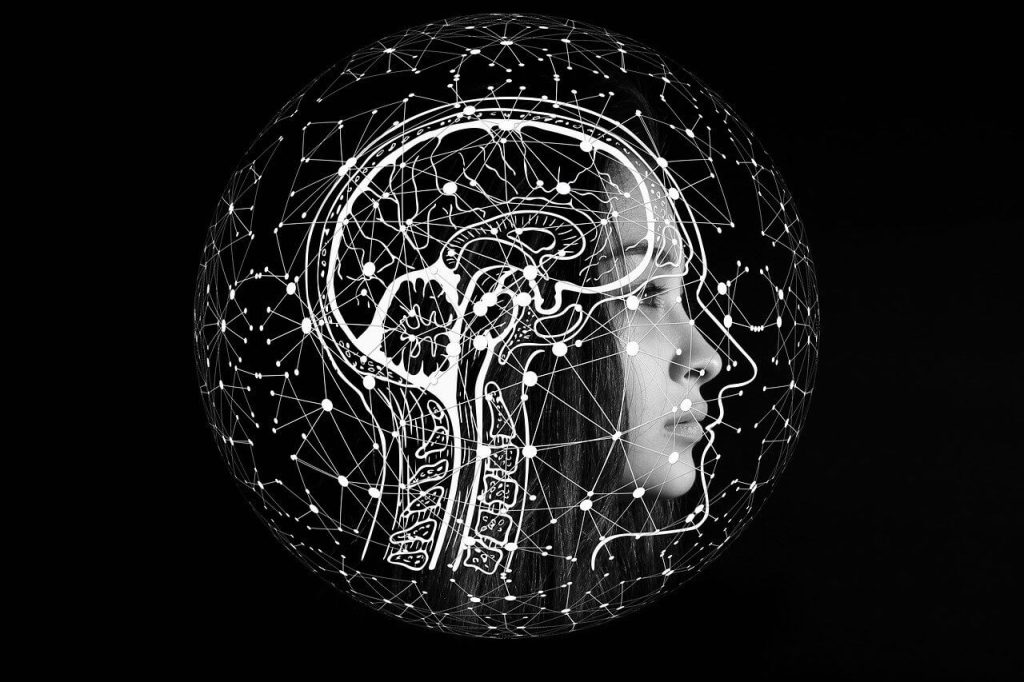

Scientists say the loss of the Parkin gene, which controls dopamine release, may be the trigger for Parkinson’s disease.
(credit: Photo by Geralt taken from Pixabay)
In a nutshell
- Scientists discovered a tiny genetic change in the NOVA1 gene that exists only in modern humans — not in Neanderthals, other primates, or any other animals. When this human version was placed in mice, it changed how they vocalized.
- Out of more than 650,000 human genomes studied, only six people carried the older version of this gene, suggesting this change spread rapidly through ancient human populations and may have provided an evolutionary advantage related to speech.
- The findings could help explain how human language evolved and may lead to better understanding of speech and language disorders, since NOVA1 has been linked to conditions affecting communication abilities.
NEW YORK — Sometimes the biggest discoveries come in the smallest packages. Scientists have identified a tiny genetic change—present in nearly all living humans but absent in our closest extinct relatives—that may have influenced the development of spoken language.
This genetic variation in a brain protein called NOVA1 influences the vocalization patterns of mice when engineered into their DNA, according to new research from The Rockefeller University. The finding offers tantalizing clues about how human language might have evolved.
“This gene is part of a sweeping evolutionary change in early modern humans and hints at potential ancient origins of spoken language,” says lead researcher Robert B. Darnell, head of the Laboratory of Molecular Neuro-Oncology at Rockefeller, in a statement. “NOVA1 may be a bona fide human ‘language gene,’ though certainly it’s only one of many human-specific genetic changes.”
The story begins in the brain, where NOVA1 acts like a conductor, directing how other genes are expressed in nerve cells. The human version differs from that found in other animals by just one building block, a simple swap of one amino acid for another. This small change is enough to alter how mice vocalize when they carry the human version.
To test its effects, researchers gave mice the human variant of NOVA1 using genetic engineering. While the mice developed normally, their vocal patterns changed in surprising ways. Baby mice normally make high-pitched squeaks when separated from their mothers, which is a crucial survival behavior. The mice with the human gene variant squeaked differently, showing distinct patterns in their calls.


Adult male mice also changed their tunes. When courting females, male mice typically sing complex ultrasonic songs — pitches too high for human ears to hear. Those carrying the human NOVA1 variant produced songs with different durations and frequencies compared to normal mice.
What makes this discovery particularly intriguing is that this genetic variant appears uniquely human. When researchers examined DNA from our extinct cousins — Neanderthals and Denisovans — they found these ancient humans had the same version of NOVA1 as other animals. In fact, out of more than 650,000 modern human genomes studied, only six people carried the ancient version of the gene.
This suggests that somewhere in Africa, a population of early modern humans evolved this new variant, which then spread throughout the human population as people migrated across the globe. The variant’s rapid spread hints that it provided some advantage, possibly related to communication abilities.
The research may also shed light on various speech and language disorders. NOVA1 has been linked to autism spectrum disorders, and researchers recently found a patient with NOVA1-related genetic changes who showed delayed speech development.
“We believe that understanding these issues will provide important insights into how the brain operates during vocal communications—and how its misregulation leads to certain disorders,” says Yoko Tajima, the study’s lead author.
Understanding exactly how this genetic change affects the brain reveals fascinating details about its potential role in language development. When the researchers examined brain tissue from the mice, they found that while the human NOVA1 variant didn’t disrupt the protein’s basic function, it did cause subtle changes in how certain genes were processed, particularly genes involved in vocal behavior.


To record and analyze mouse vocalizations, the team used specialized microphones and software that could detect ultrasonic sounds. “All baby mice make ultrasonic squeaks to their moms, and language researchers categorize the varying squeaks as four ‘letters’ – S, D, U, and M,” explains Darnell. The mice carrying the human gene version produced different patterns of these “letters” compared to normal mice.
Adult mice showed changes too. When male mice encounter females, they produce complex sequences of ultrasonic calls, essentially mouse love songs. Males with the human NOVA1 variant created songs with unique characteristics, particularly in how they varied their pitch and tone.
The discovery’s roots stretch back three decades, when Darnell’s team first identified NOVA1 while studying a rare neurological condition. Over the years, they began noticing connections between variations in this gene and difficulties with language and movement. This latest research opens new avenues for understanding how genes shape our ability to communicate.
Darnell and Tajima believe their findings have tangible benefits beyond just understanding human evolution. The research could help explain various conditions affecting speech and language. Since NOVA1 has been linked to autism spectrum disorders and other developmental conditions, understanding how it works could lead to better treatments for speech and language difficulties.
“Our discovery could have clinical relevance in many ways, ranging from developmental disorders to neurodegenerative disease,” says Darnell.
Paper Summary
Methodology
The research team used modern genetic engineering techniques to create mice carrying the human version of NOVA1. They recorded mouse calls using specialized microphones and analyzed them with software that could break down the acoustic patterns. They also examined brain tissue to understand how the genetic change affected gene processing at the molecular level.
Results
The mice showed specific changes in their vocalizations:
- Baby mice produced different patterns of ultrasonic calls
- Adult male mice created courtship songs with unique characteristics
- The human variant affected how certain genes were processed in the brain, particularly those involved in vocalization
- The analysis of human genetic databases revealed this variant is nearly universal in modern humans
Limitations
While mice are useful for studying basic aspects of vocal communication, their vocalizations are much simpler than human language. The study examined just one genetic change, while human language likely evolved through many genetic modifications working together. Additionally, the research couldn’t directly test how this gene variant affected early humans when it first appeared.
Discussion and Takeaways
This research provides concrete evidence that a genetic change unique to humans affects basic vocal communication circuits in the brain. The findings suggest that even small genetic changes can have significant effects on complex behaviors like vocalization. The work also demonstrates how studying genes in mice can help us understand human evolution and development.
Researchers plan to investigate how NOVA1 affects language development and its potential role in various communication disorders. This could lead to better understanding and treatment of conditions affecting speech and language development.
Funding and Disclosures
This research represents a collaboration between multiple departments at The Rockefeller University, supported by the Howard Hughes Medical Institute, National Institutes of Health, and the Japan Society for the Promotion of Science. The researchers declared no competing interests.
Publication Details
The study, “A humanized NOVA1 splicing factor alters mouse vocal communications,” was published in Nature Communications in February 2025. The research was conducted primarily at The Rockefeller University, with contributions from several other institutions.







